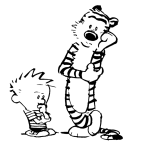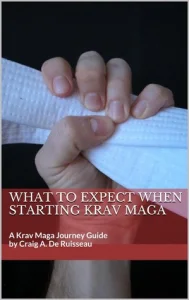“Any fool can know. The point is to understand.”
― Albert Einstein
As adults, we are often lulled into silence and complacency after achieving a certain level of competence in a subject. This can happen at  school, at work, at home, and in the dojo. We get comfortable enough that we can settle into a groove and just coast along without questioning or pushing back on the walls. We listen, we mimic, we go home thinking we learned some cool new stuff. This is called passive learning. The more advanced we become and the more belts, bars, patches, or years we stack on, the more we should be questioning and seek to understand at a deeper level. We should internalize what the lesson is about and what the technique is doing, using this knowledge, alongside what we already know, to solve problems. This is active learning and must be every successful student’s mindset.
school, at work, at home, and in the dojo. We get comfortable enough that we can settle into a groove and just coast along without questioning or pushing back on the walls. We listen, we mimic, we go home thinking we learned some cool new stuff. This is called passive learning. The more advanced we become and the more belts, bars, patches, or years we stack on, the more we should be questioning and seek to understand at a deeper level. We should internalize what the lesson is about and what the technique is doing, using this knowledge, alongside what we already know, to solve problems. This is active learning and must be every successful student’s mindset.
As White Belts, even the shiest student will be brimming with questions, usually so much so that they’ll overcome their reluctance to ask. Questions come easily and often: “Why do I do that?”, “Where does my left foot go?” — or even “Is this right?”. These questions are necessary to get over that initial learning hump and enable us to line things up mentally, to make some order of the chaos, and begin internalizing the learning making it our own. Given the inexperience we have at this stage, we almost all fall into a passive learning trance as we take mental notes and begin filling our cup with all this new information. As we advance in years, eventually earning our Black Belts, it is common for us to stifle our curiosity. Many students become satisfied with their past accomplishments and accept new lessons as “bonus” knowledge to stack on top of their already substantial talent and skill. They lose their mental edge and stop questioning. They never move beyond this passive learning stage to ask more advanced questions or change their behavior to become more engaged mentally.
As underbelts we learn the vocabulary of Krav Maga. The building blocks. “This is how you perform a hammerfist”. “This is the technique for getting out of a front choke”. Most questions that come up are around to the “nuts-and-bolts” mechanics of the technique like: “My hand is getting hung up on his arm. What’s up with that?”. This is an important kind of question that leads to mastery of the basics. The more we advance as students, the more we will string our budding vocabulary into sentences. We start speaking the language more fluently, through repetition and muscle memory, so that we aren’t searching for the right word. Applying this analogy to Krav Maga, increased proficiency and skill leads to stringing together techniques is a logical sequence without having to think too much about it. It becomes a continuous flow: instinctively defending an attacker with the appropriate block/counter, tenderizing them with a series of brutal combatives, and ultimately ending with disengagement and hasty retreat.
It’s my firm belief that a student’s curiosity, number of burning questions, and desire to know should only increase over time. Most of these questions will form an internal dialogue, helping you hone your technique and give you solutions to apply it practically. Occasionally, a question will rattle around in your head and your brain won’t be able to chase it down to a conclusion. At this point these mental questions could lead to you and your partner working something hypothetically as in: “Can you try charging at me this time instead of standing still? I want to try something.” When these questions can’t be figured out mentally or worked out with a partner 1-on-1, the question should be raised to the instructor. You never know, sometimes the question is pertinent enough that class will be stopped to be shared with the whole class for their benefit.
Questions will always be there, often of a different variety and coming from a different perspective than you had as a White Belt. Now maybe instead of wondering where a foot should be at a certain point during the  technique (though this sometimes still a mystery!), questions are more about context, variables, or even intent. They’re more “sophisticated” questions coming from a deeper understanding of how Krav Maga works, the nature and set-up of attacks, and even how things can (and often will) go wrong. Okay, I have neutralized the threat and have him in a clinch. He’s worn down but…what if he has a knife? What if this is a two-person attack — how do I react? What if this is outside on a hill or in a sandy, icy parking lot and I’m wearing a bulky winter coat? How can a particular counter be made even faster — palm in or outward? What if this technique relies heavily on a 360 defense but my Power Rangers Halloween costume restricts that kind of movement? This is the intersection of active learning and more sophisticated questions — the sweet spot for taking one’s training to the next level.
technique (though this sometimes still a mystery!), questions are more about context, variables, or even intent. They’re more “sophisticated” questions coming from a deeper understanding of how Krav Maga works, the nature and set-up of attacks, and even how things can (and often will) go wrong. Okay, I have neutralized the threat and have him in a clinch. He’s worn down but…what if he has a knife? What if this is a two-person attack — how do I react? What if this is outside on a hill or in a sandy, icy parking lot and I’m wearing a bulky winter coat? How can a particular counter be made even faster — palm in or outward? What if this technique relies heavily on a 360 defense but my Power Rangers Halloween costume restricts that kind of movement? This is the intersection of active learning and more sophisticated questions — the sweet spot for taking one’s training to the next level.
The attitude I try to keep and urge you to share is to never stop questioning and strive to be an active learner. Always be mentally engaged and focused on the technique at hand and be willing to challenge it, work and rework it, and test it as you. Everyone’s different. By developing the habit of really working the techniques over and hammering them mentally into a comfortable shape that fits your brain you’ll become a better student. You’ll also find that you are able to make these techniques your own, have more fun, be more engaged, and increase your odds of retaining them for when you need to draw from them instinctively without thought.





